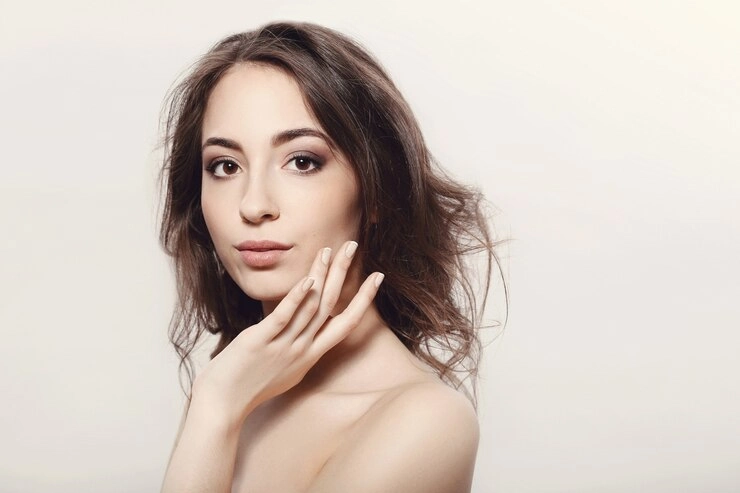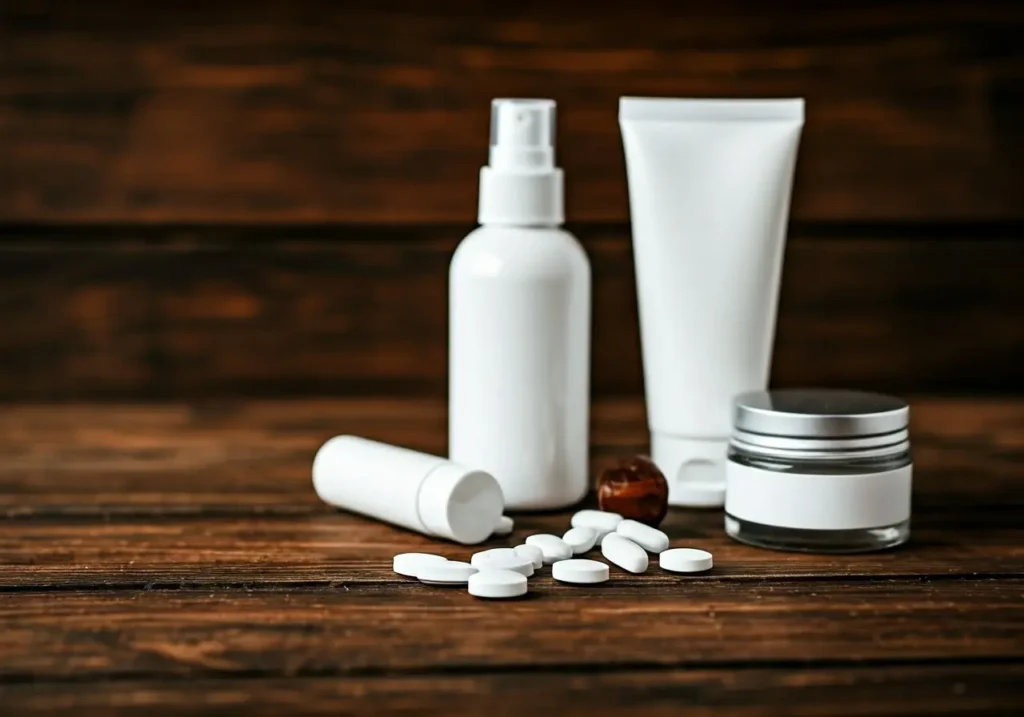Botox has gained immense popularity as a non-invasive cosmetic treatment for those seeking timeless beauty. However, the scientific principles behind its effectiveness are often misunderstood. In this article, we’ll explore the science of Botox, demystify its mechanisms, and offer insights into how it contributes to a youthful appearance, while ensuring you make informed decisions about its use.
The History and Evolution of Botox
Botox, derived from the Clostridium botulinum bacterium, was first identified in the 19th century but only gained prominence for its cosmetic uses in the late 20th century. Initially utilized for medical purposes like treating muscle spasms, its valuable aesthetic applications were soon discovered. This section delves into Botox’s journey from a medical marvel to a beauty staple.
The transformation of Botox from merely a medical intervention to a cosmetic phenomenon is quite remarkable. It all began when researchers discovered that Botulinum toxin type A could be harnessed to alleviate muscle contractions, thus treating conditions such as strabismus (crossed eyes) and blepharospasm (uncontrollable blinking). The journey took a novel turn in the 1980s, as ophthalmologists utilizing the treatment for eye disorders noticed improvement in patients’ facial lines, a serendipitous discovery that whetted the appetite of the cosmetology sector. This off-label application sparked intrigue within the medical community, eventually leading to the FDA approving Botox for cosmetic uses in 2002.
The burgeoning popularity of Botox marked a turning point in cosmetic dermatology, introducing a minimally invasive procedure that promised transient youthfulness without the ordeal of surgery. With time, advancements in the formulation and administration have minimized adverse effects and optimized results, securing its position as a mainstay within cosmetic therapies. As the demand for non-invasive beauty solutions rises, Botox continues to evolve, finding novel applications and broadening its spectrum of utility, from aesthetics to neurology. The influence of Botox in the beauty paradigm is undeniable, and future prospects in its application remain promising.
How Botox Works: The Science Explained
At its core, Botox functions by temporarily blocking nerve signals to certain muscles, causing them to relax. This prevents the repetitive muscle movements that lead to wrinkles over time. By understanding this process, we can better appreciate how Botox effectively smoothens the skin, offering a more youthful appearance with minimal side effects.
Scientifically, Botox operates through a mechanism that involves the inhibition of acetylcholine release at the neuromuscular junction. Acetylcholine is a neurotransmitter responsible for signalling muscles to contract. By administering Botox into the facial muscles, it effectively disrupts this communication, resulting in a reduction in muscle activity and, consequently, a softening of facial wrinkles. This muscle relaxation is not permanent, lasting approximately three to six months, necessitating follow-up treatments for sustained results.
Botox’s specificity in targeting only motor neurons ensures a localized effect, sparing sensory neurons and thus avoiding numbness in the treated regions. This explains its large safety margin, provided the procedure is done by qualified professionals. The precision of Botox applications in wrinkle reduction is a testament to the profound understanding of facial anatomy by practitioners, who can skillfully tailor treatments for achieving seamless and natural appearances. Importantly, Botox treatments do not affect underlying skin quality but rather complement holistic dermatology care regimens designed to nurture skin health and vitality.
Applications of Botox Beyond Aesthetics
While primarily known for its aesthetic benefits, Botox also has significant medical applications. It is used to treat conditions such as chronic migraines, hyperhidrosis, and even certain muscular disorders. This section discusses the versatility of Botox in medical spheres, illustrating its integral role in improving patients’ quality of life.
Botox’s therapeutic clout extends well beyond the realm of aesthetics. For instance, it is efficacious in managing chronic migraines by reducing their frequency and severity. The mechanism involves the relaxation of cranial muscles and modulation of pain pathways, providing relief for sufferers when other treatment options may falter. Likewise, Botox is a remedy for hyperhidrosis—a condition characterized by excessive sweating—wherein it inhibits the sympathetic nerves responsible for sweat secretion, thereby significantly improving patient comfort and social interactions.
Moreover, Botox is employed in the treatment of spasticity associated with neurological disorders like cerebral palsy or multiple sclerosis. By mitigating muscle stiffness and spasms, it enhances patient mobility and quality of life. The scope of Botox’s medicinal applications is continually broadening, with ongoing research exploring potential uses in conditions such as overactive bladder and depression. This adaptability of Botox reflects its prowess as a multifaceted medical tool, capable of addressing a diverse array of therapeutic needs beyond its cosmetic allure.
Assessing the Safety and Efficacy of Botox
Understanding the safety profile of Botox is crucial for potential users. Generally, Botox is considered safe when administered by qualified professionals. However, awareness of possible side effects, such as localized pain or bruising, is necessary. Here, we investigate the measures taken to ensure Botox treatments remain secure and effective.
When contemplating Botox treatments, one must weigh the potential side effects against the anticipated benefits. Common reactions include minor bruising at the injection site, transient headaches, or mild swelling. However, rare complications such as ptosis (drooping eyelids) may arise if the toxin migrates, underscoring the importance of precision in administration. To mitigate such risks, Botox must be administered by experienced practitioners familiar with facial anatomy, adhering to stringent safety standards and dose recommendations.
Furthermore, comprehensive pre-treatment consultations enable practitioners to tailor Botox protocols according to individual patient diagnostics and history. Contraindications, such as allergies to botulinum toxin or existing medical conditions, should be thoroughly evaluated. The rigorous screening and meticulous approach to Botox administration typify the professional standards upheld by reputable clinics, ensuring patients receive appropriate and personalized care, heralding optimal outcomes with minimal risks. For those exploring Botox, understanding its safety paradigm not only fosters informed decision-making but also emphasizes the necessity for selecting qualified providers committed to achieving aesthetic goals responsibly.
Deciding If Botox Is Right For You
Embarking on Botox treatment is a personal decision that involves evaluating aesthetic goals, potential risks, and lifestyle considerations. This section offers guidance on assessing if Botox aligns with your beauty objectives, ensuring you proceed with the knowledge needed to make an informed choice.
Determining the suitability of Botox hinges on balancing desired transformations against personal comfort thresholds and expectations. Prospective patients should reflect on their motivations—whether seeking to prevent signs of aging, correct specific cosmetic concerns or address medical conditions amenable to Botox treatment. Equally vital is understanding the temporal nature of results, necessitating commitment to ongoing treatments for continuous benefit. Financial considerations, including the cost of sessions and potential cumulative expenses, must also be factored into the decision-making process.
Importantly, choosing a reputed clinic adept at executing Botox demands due diligence, encompassing verification of practitioner credentials, evaluating patient testimonials, and potentially availing initial consultations to gauge practitioner-patient rapport. The advantages of Botox can be transformative, yet it is paramount that individuals embark on this journey with clarity and a sense of empowerment, making informed decisions aligned with their aesthetic aspirations and healthcare priorities. Should you consider exploring Botox further, our comprehensive guide on neurotoxins at Bellatudo Skin and Wellness Center can provide valuable insights into the treatment protocol and expectations, helping you navigate the decision-making confidently and responsibly.
Unlocking Youth: The Botox Verdict
The science of Botox presents a fascinating intersection of biology and aesthetics, offering a safe and effective avenue for maintaining youthful beauty when administered responsibly. By understanding its mechanisms, benefits, and potential side effects, individuals can approach Botox treatments with confidence and clarity. Should you be considering Botox to enhance your beauty journey, we invite you to book a complimentary consultation with Dr. Laura Cho online at Bellatudo Skin and Wellness Center. Additionally, take a moment to explore the before and after results of our happy patients on our Instagram page, showcasing the transformative effects of Botox. As we continue to unlock the secrets of aging, Botox remains a powerful tool in the quest for timeless beauty.





